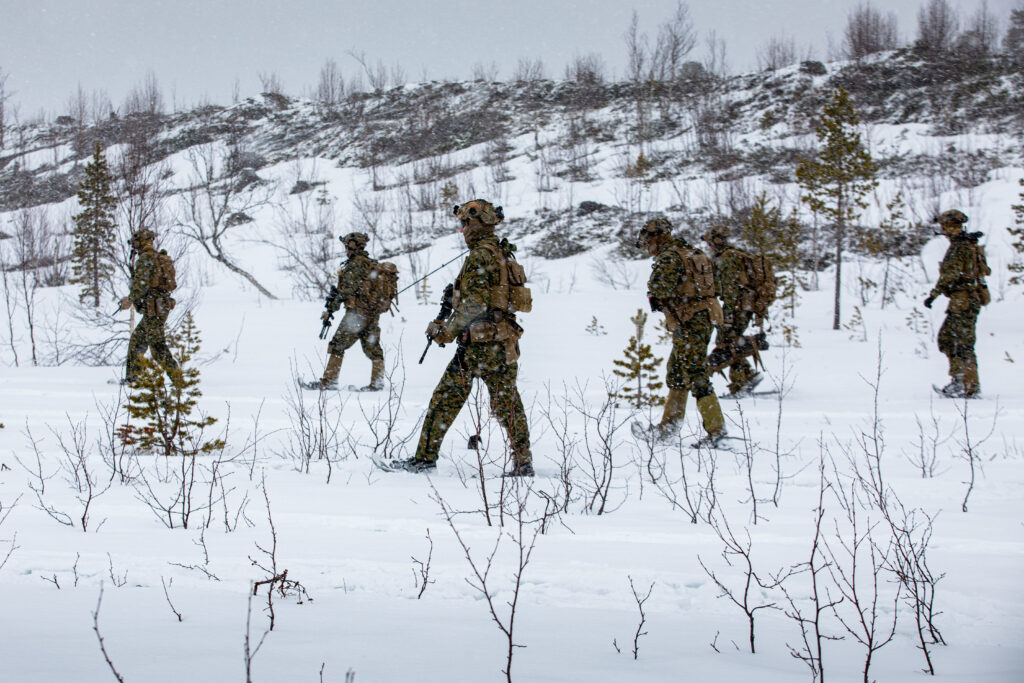
ARLINGTON, Va. — The rapid deployment of Marine Corps forces exercising in Norway to a real-world situation in eastern Europe to shore up NATO presence was a good example of a stand-in force operating inside a weapons engagement zone, the Marine Corps commandant said.
Speaking July 7 in a webinar of the Hudson Institute, a Washington think tank, Gen. David H. Berger, commandant of the Marine Corps, said the 2,000-plus Marines sent from the U.S. East Coast to Norway for a scheduled major exercise, as well as others to an unrelated reconnaissance/counter exercise, were able to rapidly redeploy deeper in Europe in support of NATO forces when Russia invaded Ukraine in February.
The Marine Corps forces Europe at the time included a squadron of F/A-18C Hornet strike fighters and an air control squadrons detachment with a Ground/Air Task-Oriented Radar, plus information and intelligence units. KC-130J tanker/transport aircraft also were dispatched to the area.
The Marine units were in a “very forward posture inside the collection and weapons engagement zone, operating persistently all the time, not trying to hide, showing them that we’re there,” Berger said.
“The creativity of them [the deployed Marines] in terms of mobility and also understanding things like satellite vulnerability windows, the basics of camouflage — in other words, knowing when they can see me and how do I use that from an information perspective effectively,” he said. “How do I confuse them [the adversary], how do I convince them that they’re seeing is what they want to see but it’s not really accurate?”
Berger praised the deployed Marines, noting their “just marvelous, magnificent, creative work by a bunch of Marines, all as stand-in force, all withing the range of weapons systems.”
He noted that a similar demonstration from the Indo-Pacific region, where Marines were moving around between the first and second island chains by ship and ashore “constantly making sure the adversary knew we were there, constantly moving small elements, constantly repeating closing kill chains over and over — constructive ones — trying to cut the timeline down, down, down. Once you get it down and you’re comfortable, start interdicting [our] different communications paths to make it harder on ourselves.
“The idea is just ‘give it to the operating forces, the fleet, and let them run with it,’” he said. “They will inform us what worked best in their neighborhood. I’m very comfortable what’s working in the Middle East may be a little bit different flavor and what’s happening in Europe may be different than what’s happening in the Pacific. We need to be flexible enough to allow for that, and we can.
“This isn’t a ‘go there for exercise and come home’,” the commandant said. “It’s ‘stay in their face the whole time.’”






